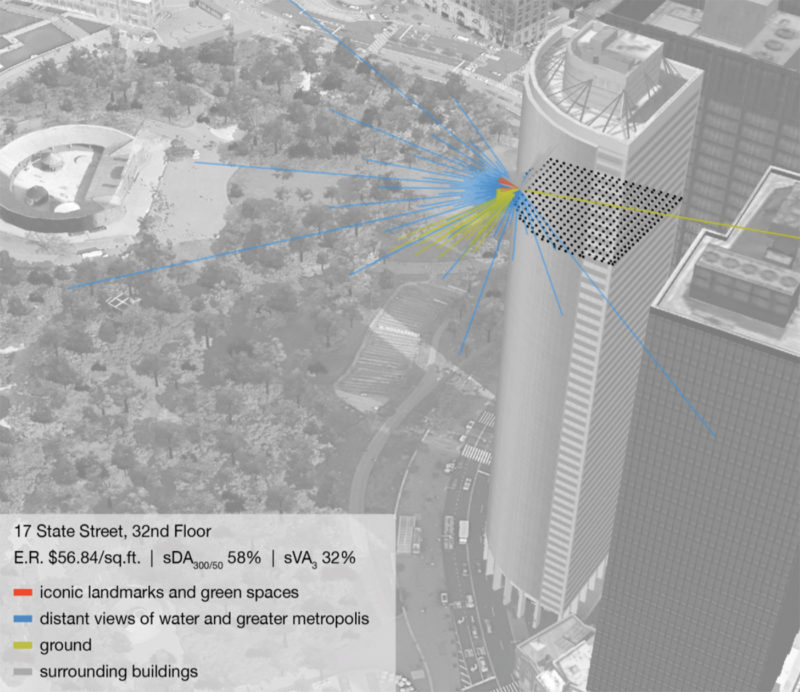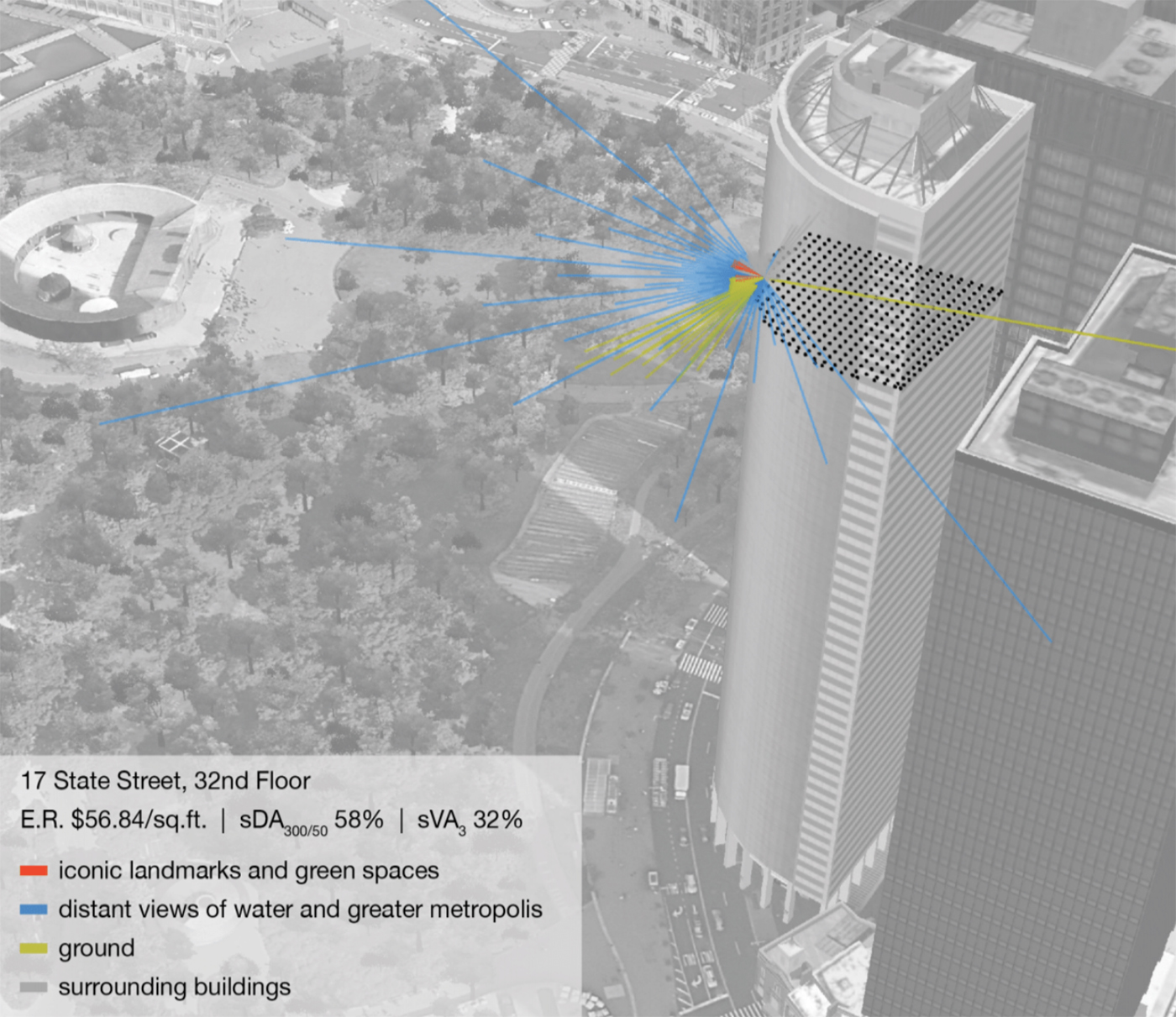Office tenants value views and have historically paid for them. The value of views is evident in human health data and, as shown in this paper, in tenant lease prices. The metrics introduced in this work can also be used in architectural design and planning to analyze the potential for views in new and existing buildings. Overall, the method proposed in this work provides a systematic means by which to further explore the value of views.
Development of View Analysis Metrics and Their Financial Impacts on Office Rents
A view contributes to a person’s visual perception, comfort and health in a building—reducing stress, improving concentration, increasing productivity and bolstering creativity. Yet, what makes a view alluring is also what makes it ineffable and difficult to characterize. In this study, we introduce two new metrics to quantitatively assess view access in open floorplans, and using the metrics we measure the economic impact of views on office rents in Manhattan, New York City. What we find is that spaces with high access to views have a 6% net effective rent premium over spaces with low access to views. This financial impact is independent of other value drivers, such as daylight. In the case where there is both high daylight and view access there is also a 6% net effective rent premium.
Methodology:
We evaluate spatial view access in 5,154 office spaces, and then combining the view analysis results with rent transaction data we model the financial performance of rents paid by tenants with varying views whilst controlling for other vital factors impacting office rents.

